Why Dogs Lick Their Owners, and 7 Other Signs of Unusual Canine Behavior
No matter if you have a dog or not, each of us can find ourselves in a situation when an animal’s health and life depend on the correct interpretation of its behavior. Body language, gait, gaze, and a combination of different actions can be difficult to interpret, and even experienced dog owners aren’t always good at finding the meaning of these signals.
We at 5-Minute Crafts are going to explain how to correctly interpret the ambiguous behavior of a dog and notice alarming signs in time.
1. The dog howls when it hears music.
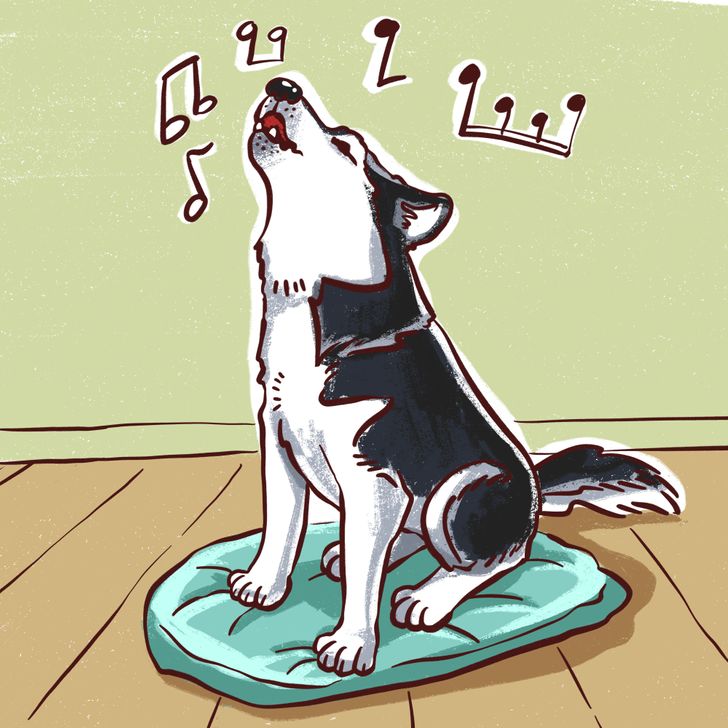
There is no danger here. Howling and melodic “singing” is considered normal behavior for dogs, inherent in them by nature. This is not a sign of annoyance — it’s how animals communicate. In addition, they also have their own musical preferences. You can conduct an experiment and find out what sounds your pet likes most, whether it’s a famous musical hit, an opera, or just the howl of another dog.
But if this howling is a problem for you, try the following:
- If the dog is reacting to a specific sound source, make it quieter.
- Teach the dog the “quiet” command, and give it a treat if it stops howling after you say the command.
However, sometimes just playing another composition is enough.
2. The dog suddenly becomes hyperactive and starts running around, ignoring obstacles.
There is no danger here. Most often, this behavior is associated with a sudden release of energy, and various events can serve as a trigger. For example, this could be an expression of joy and the stressful situation that preceded it, like if the dog was in a closed room for a long time and then got taken out for a walk.
Such periodic hyperactivity is a normal reaction in dogs. But if the animal behaves this way all the time, you should take a closer look at the behavior, try to determine the reasons for it, and, if necessary, seek advice from a veterinarian. And, of course, try not to get in the way of your pet during such a run to avoid a possible collision.
3. The dog shows fear and obedience, but at the same time, growls and bares its teeth.
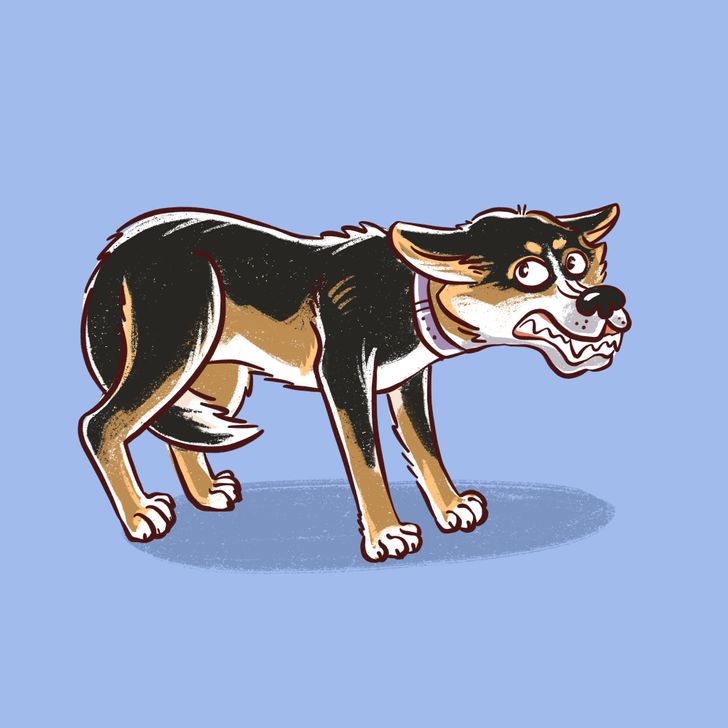
There is danger here. This type of behavior is often confusing. The dog is looking straight at you and doesn’t look away, its tail is down, the ears are directed to the side or even flattened, and the body can be lowered in front and raised in the back. Some its body parts are signaling that the dog is scared, while others (growling, raised lips, showing teeth, tense forehead) warn that the animal is ready to attack and may be aggressive.
But a grin doesn’t always mean aggression. You should take into account the combination of different signals. For example, it can be a situation when an animal demonstrates obedience: it lowers the head, wiggles its tail, flattens the ears, its body is relaxed, its eyesight is soft but at the same time, the canine is showing its teeth.
4. The dog scoots its bottom.
There is danger here. It looks quite funny from the side, but, in fact, there is nothing to laugh at in this situation. This is atypical behavior. If your pet scoots on the floor on its bottom or simply can’t sit still in one place, it can signal that there’s itching, irritation, pain, or some other problem.
Perhaps it’s all about special glands, which are located on the sides just below the anus in canines. They contain a liquid, which is a kind of biomarker that allows animals to leave marks that are understandable to other canines. If the glands are not working properly, they can become clogged. This causes pain and discomfort to the pet, making it rub against the floor. Other causes of this behavior can be parasites, food allergies, or irritation after grooming. In any case, it’s better to bring your pet to the veterinarian for an assessment.
5. The dog starts to pant a lot and licks itself.
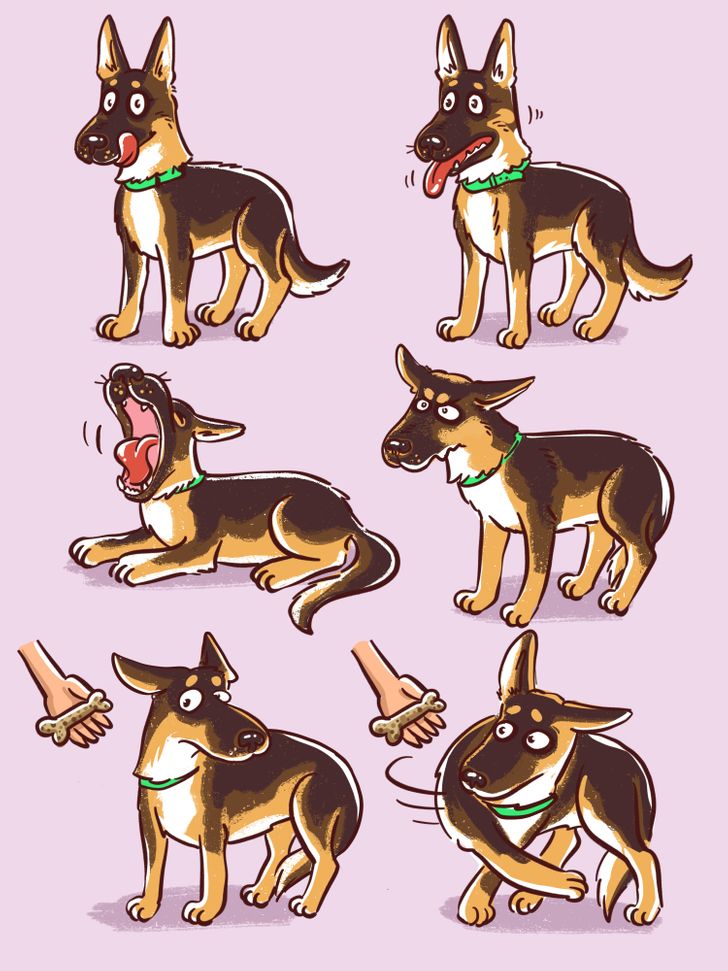
There is danger here. There are many signals that can be confusing if taken out of context. For example, this could be a dog panting frequently, even though it isn’t feeling hot or thirsty (it refuses to drink), or it suddenly starts to lick its chops, even if it has recently been fed. This behavior can indicate fear and anxiety. An animal that experiences these emotions and feelings may also show the following symptoms:
- The eyebrows are drawn together, they’re displaying a frown, and the ears are set aside.
- The dog is moving slowly, sometimes even “freezing” on the go.
- The pet yawns and behaves as if it wants to sleep, even if it’s not supposed to be tired.
- It looks to the sides anxiously.
- It suddenly refuses to eat, even though it was hungry before.
- It leaves you and hides.
- It walks chaotically.
- Its gait becomes somewhat of a creep.
Usually, not one but several signals appear in a stressful situation. At the same time, each dog can have its individual behavioral habits, which is why the aforementioned signs should be considered as a kind of reference that can become a starting point in monitoring and learning the body language of your pet.
6. The dog licks its owner’s face.
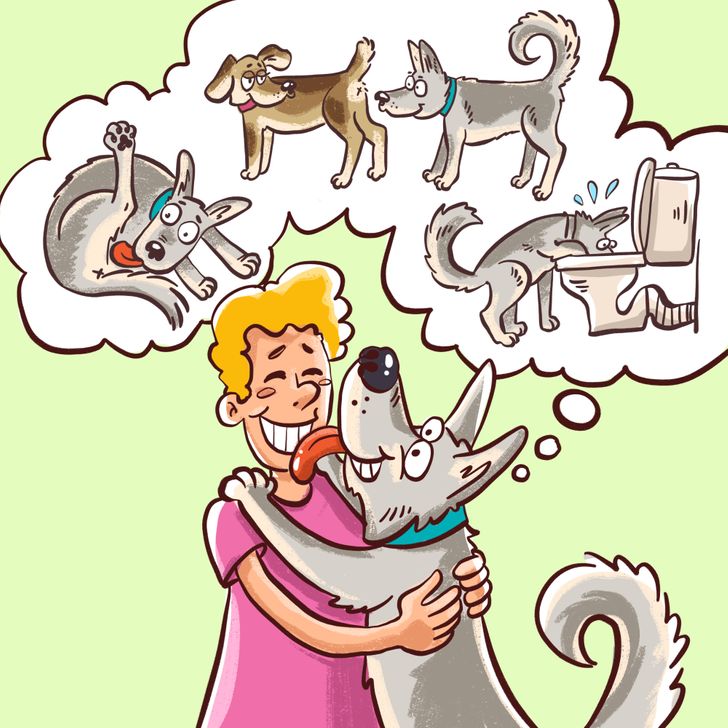
There could be danger here. If a dog licks another dog’s face or a person’s face, this is normal social behavior. This is also a way for the dog to ask you to share food (that you have recently eaten), as well as to show affection and attention. Dogs often lick each other or their owners as part of natural grooming. If the dog suddenly licks a stranger’s face, then this may be an attempt to calm down a person who, in the animal’s opinion, can be dangerous.
Nevertheless, one should keep in mind certain risks. If a dog is licking your skin that doesn’t have open wounds, it doesn’t pose any danger. Otherwise, if the wound is wetted with the dog’s saliva, the infection can get inside the wound. In addition, dogs’ saliva can contain bacteria that are harmless to them but dangerous to humans.
All in all, think about what your canine might have been doing before licking you. That’s why it’s better to avoid this type of expressing feelings from your pet and wash your hands after petting the dog, even if it lives with you.
7. The dog rolls in some stinky stuff.
There is danger here. It seems strange that dogs, whose scent is much sharper than ours, have an unpleasant habit of rolling in stinky stuff while not-so-nice smells are supposed to turn these animals off.
There isn’t an exact explanation for this behavior, but there are assumptions that are connected with similar behavior in wolves, which are the closest relatives to dogs. Some experts believe that this is how animals try to soak themselves in an extraneous odor, which helps them to disguise their own. It can be important when hunting. Others suggest that this is how the wolf reacts to a smell that seems interesting to it — having soaked their fur in it, the animal “carries” the smell to demonstrate it to other members of the pack. But there are cases when several wolves roll in some stinky stuff together in order to have a single smell, which can unite them.
8. The dog pulls its owner with a leash.
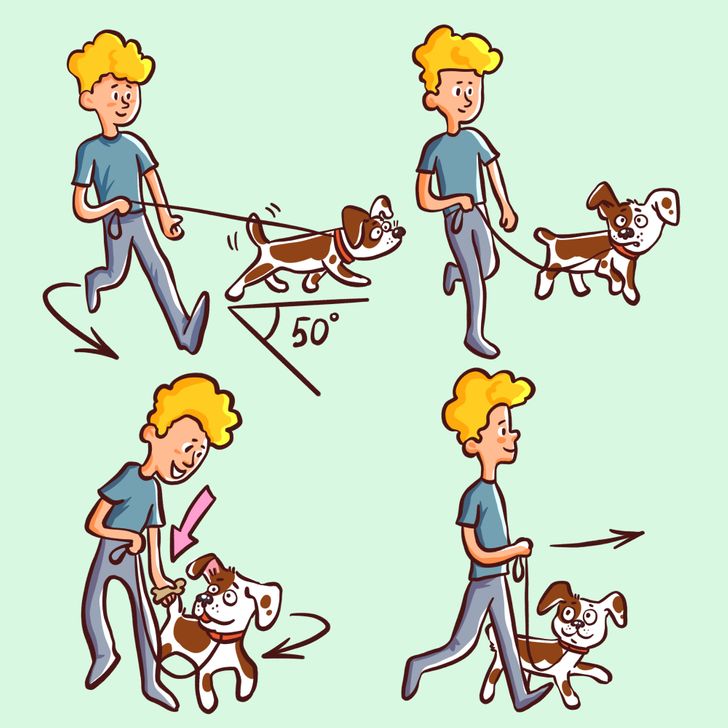
If the dog starts to pull the leash, and the owner obediently speeds up, it means the latter loses full control over the animal. To prevent this, you can try different techniques:
- If the dog is strong, once it starts to pull you by stretching the leash, change the direction of movement at any angle less than 180°. Wait for the animal to stop and freeze, waiting for you. Get their attention and give your pet a treat, then keep going in the right direction.
- Once your dog starts to pull the leash, turn around and move in the opposite direction. Wait until the dog stops. Get its attention and give it a treat. After that, you can continue moving in the necessary direction.
- Stop when the dog starts to pull. Pretend you don’t notice the animal. When the dog turns around or comes up to you, get its attention and give it a treat, keeping it on the palm, close to your legs (as if you are hinting that the dog should be moving next to you, not at a distance). After this, you can continue moving ahead.